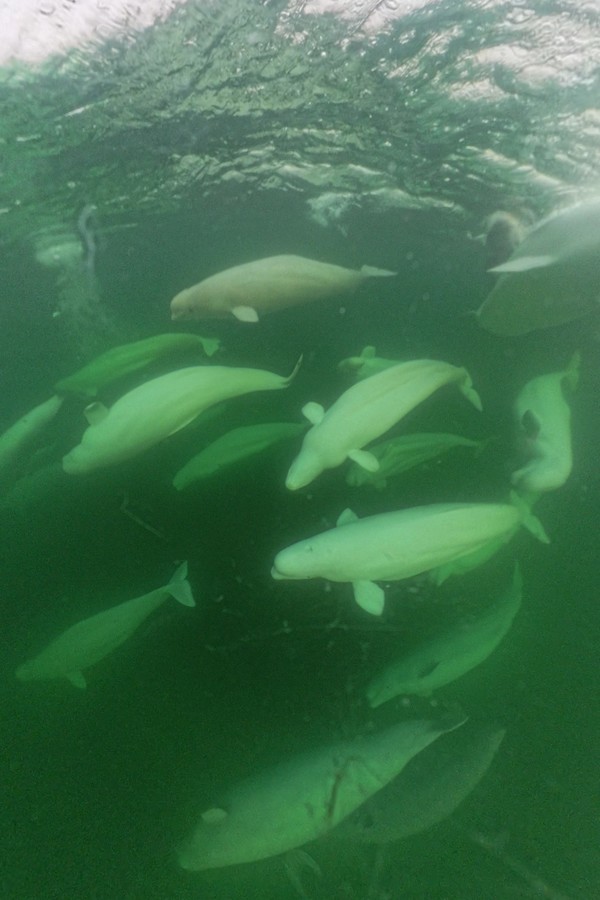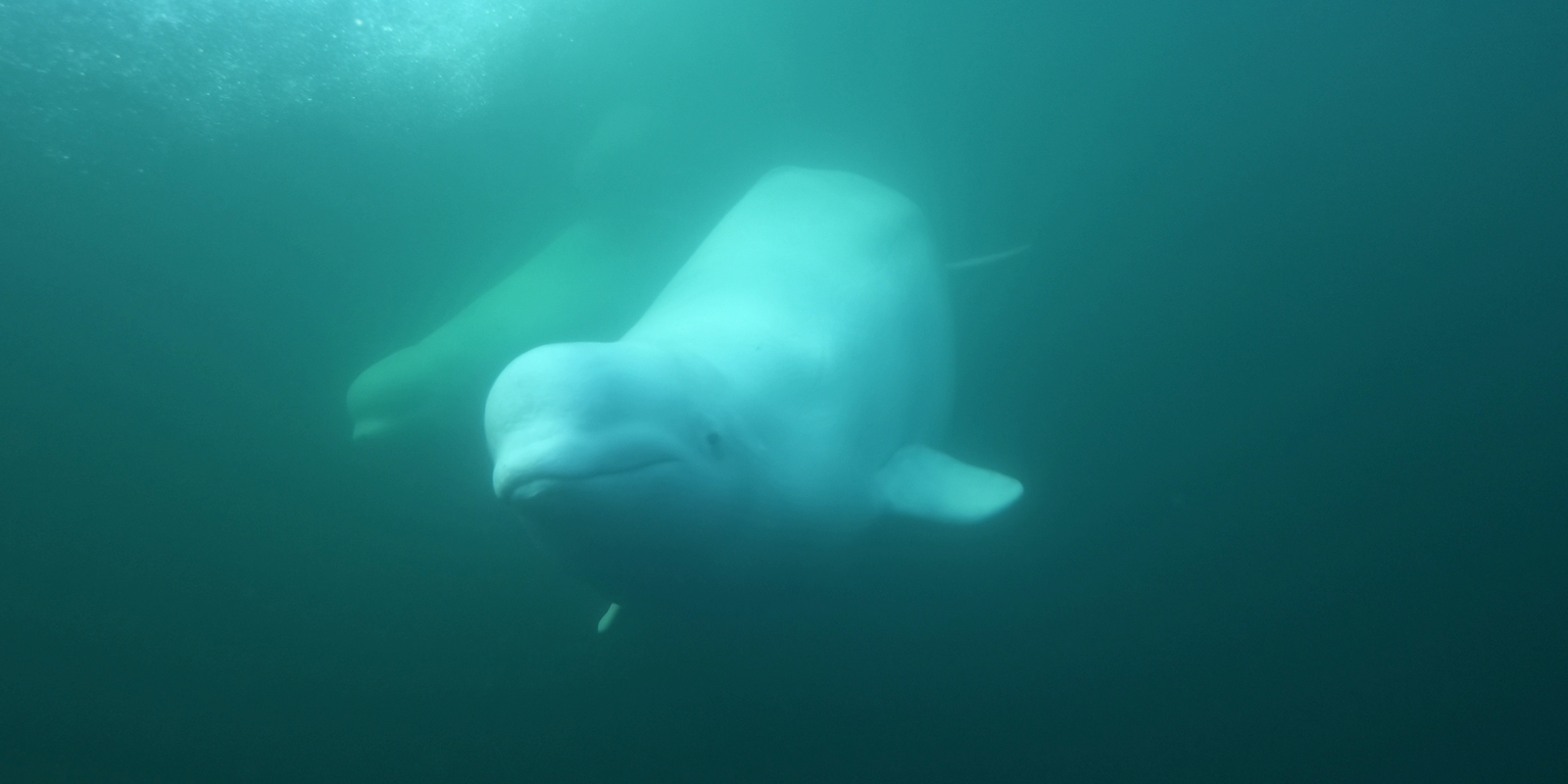Our Conservation and Research Team works tirelessly year-round to help us better understand the world around us through dedicated studies and research. To shine a light on our fantastic team, we spoke with Dr. Kasey Ryan, Conservation Research Associate, about her involvement with the Beluga Bits project and her passion for marine conservation.
Q: Hi Dr. Kasey! What is Beluga Bits?
A: Beluga Bits is a community science project where underwater cameras capture images of wild belugas each summer in Churchill, Manitoba. We use these photos to identify individual whales and learn about their health, behaviour, and social lives, all without disturbing them. Volunteers around the world help analyze these images online through Zooniverse.org, making this a uniquely collaborative and accessible research effort.
Q: Tell us a bit about your research background and how you got into working on Beluga Bits.
A: I have been studying beluga whales for over a decade and have investigated the relationship between beluga behaviour and acoustic signals. I was able to build up a photographic identification catalogue and examine their dives and movements.
Toward the end of my PhD at the University of Manitoba, I joined the Conservation and Research team to remain involved in beluga research. Beluga Bits immediately stood out to me as one of the most exciting projects in this field because the underwater imagery offers a perspective that we don’t get in any other beluga population, and the western Hudson Bay population is the largest in the world.

Dr. Kasey Ryan, out in the field in Churchill, Manitoba.

Footage from the underwater camera of beluga whales in Churchill, Manitoba. (Photo credit: K. Ryan)
Q: What inspired your passion for beluga whales and marine animals?
A: My passion for marine mammals goes back as far as I can remember. I wanted to be a marine biologist since I was young, and meeting belugas when I was volunteering at the Shedd Aquarium (Chicago, Illinois) sealed the deal. Seeing their intelligence and how each one has their own personality made a lasting impression. My favourite part about conducting fieldwork in the Arctic has been hearing beluga vocalizations through the hull of our boats. You’d be surprised to know that they are noisy!
Most of my research has focused on endangered beluga populations in Cook Inlet, Alaska and Cumberland Sound, Nunavut, so conservation has always been at the heart of my work. Belugas play a vital role in the Arctic, both ecologically and culturally. They’re key predators and prey, linking the marine food web, and they hold deep cultural importance for northern communities that harvest them. That’s why I’m especially motivated to contribute to research that not only deepens our understanding of belugas but also supports efforts to protect them and the ecosystems they depend on.
Q: Why should people care about the Beluga Bits project? How does it help our understanding of the changing Arctic?
A: After ten years of Beluga Bits, we’ve built an incredible baseline dataset that lets us monitor how this population changes over time. As climate change and shipping activity increase in the region, this long-term perspective will be invaluable for understanding how belugas adapt, or struggle to adapt, to those pressures.
The project also offers insights that reach far beyond Churchill. What we learn from this large, healthy population can help us better understand and protect smaller, endangered beluga populations worldwide.
And perhaps most importantly, Beluga Bits brings people closer to these whales. Whether you’re a scientist, a student, or a citizen scientist halfway around the world, you can contribute to real conservation science and help tell the belugas’ story.

Beluga whales in Churchill, Manitoba. (Photo credit: K. Ryan)
Q: Do you have a favourite memory from your time out in the field?
A: One of my favourite memories from the field was kayaking in the Churchill River estuary. Several belugas approached our kayaks, lifting their heads out of the water to look at us, splashing and nudging the boats with gentle curiosity. They made all sorts of squeaks and whistles, and it was incredible to see them so close. They were much larger than they appear from shore, and yet they were so careful not to tip us into the water. Moments like that are a reminder of how intelligent and playful belugas are, and how fortunate we are to share space with them, even if only briefly.
Q: Lastly, what would you want to say to future researchers/a younger version of yourself about the work you’re doing?
A: I would tell anyone studying biological sciences/marine biology to stick with it and keep an open mind. This field can be challenging, and it can seem easy to give up, but if you’re passionate about science, it’s worth it to keep going. Say yes to as many opportunities as you can, even the ones that seem unexpected or outside your comfort zone. Before my undergraduate degree, belugas weren’t even on my radar. However, by saying yes to new experiences and staying open to where each one led, I found my way to my dream position here at Assiniboine Park Conservancy, where I work every day to help understand and protect these incredible whales.
Want to get involved with our Beluga Bits project? Head to its official page on Zooniverse.org!
Visit our Zoo Instagram page to watch Dr. Kasey share more about Beluga Bits, featuring amazing underwater footage of the belugas this summer in Churchill.




